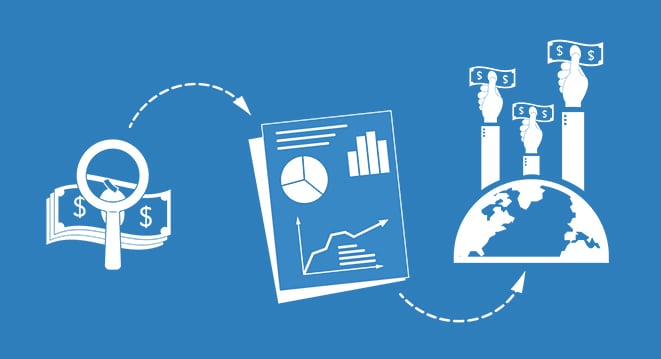There are big draws toward eCommerce for today’s retailers. 2019 saw consumers spending over $600 billion online, and the world now has around 7.1 million eCommerce sites divided into traditional, virtual and branded models — and there are more than a million of these in the U.S. alone.
It makes financial sense to have an online element. The fee for hosting a cyberstore is tiny compared to main street rent. COVID-19 has also caused a massive surge in eCommerce sales, and many businesses don’t want to lose out. Retailers adding a digital element to their store must follow four basic steps.
1. Find the perfect design
Many free and pay-for-premium websites can help you design an online store from scratch. From Wix to Weebly to WooCommerce, there’s no shortage of options (and some don’t start with “W”). Once you’ve picked one, they’ll help you secure a domain name, select and customize an eCommerce template, add products, set up payment methods and more.
Templates work well, but it may be worth spending extra to hire an experienced team to turn your eCommerce into an attractive digital storefront. A design team can also help perfect brand visuals like your logo, typeface and color scheme. You can then carry that digital identity over into the online sales process itself (more on how 71lbs can help with that below).
Make sure your eCommerce site is mobile friendly. Over half of shoppers want to use a retailer’s mobile app while browsing in physical stores (if you have one) to look for deals and promotions, and just under half will become annoyed if you’re not mobile-optimized. Know what shoppers want and, if you already have a site, test its mobile profile here.
2. Market your eCommerce site
Facebook, Instagram, Twitter, Pinterest and Snapchat are all popular choices to start generating a buzz for your online store. Facebook offers in-depth advice on how to use it to grow, and you can read guides about Instagram and Snapchat marketing to quickly learn the basics of digital promotion. You can also email existing customers if you have them or take out ads on social media when you’re ready.
If you have a brick and mortar presence, try offering digital gift cards to promote your eCommerce side. Finally, don’t forget a modern marketing requirement: clarifying on your site that you adhere to all COVID-19 business safety practices while preparing and dispatching online orders.
3. Make returns transparent and hassle-free
Online customers return things. A lot. Accept and prepare for this by getting an advantage over 51% of your competition. You can do this by offering free returns shipping, which 79% of consumers want, 69% check for before even considering a purchase and 92% will see as a reason to happily buy again from you (as long as you make it easy).
Making it free is the first step to simplicity. Next is prominently posting a clearly worded returns policy on your site and including it as a hard copy with all ordered items. When it comes to policy wording, simpler is better. Here’s a model you could use to craft your own.
You should also include a pre-printed return label with every purchase for customer convenience and have a dedicated business channel (email, phone number or web form) that deals solely with any matters related to online returns.
4. Avoid ship shocking your customers
“Shipping shock” occurs the moment a potential customer sees how much shipping expenses will add to their final order cost. Many online retailers make the mistake of only revealing this critical information at the end of the ordering process. The result? Consumers simply abandon their e-cart and leave, and they’re doing it in droves.
The average e-cart abandonment rate is pushing 70%, and the biggest contributor to that number (50%) is consumers experiencing shipping shock. The solution is to display your shipping costs early in the shopping cart process. That way, potential customers have the confidence of knowing the final expense at every stage of their browsing.
5. Keep those e-sales coming
This is best achieved by keeping customers engaged in a dynamic and profit-driving way. The online shopping experience must provide two things consumers crave: easy-to-use tracking information and a sense of personalization. Adding Premium Tracking from 71lbs to your eCommerce provides the updates your customers want with visuals that tie in seamlessly with your digital design presence and online branding.
We provide a tailored interactive sales experience that’s visually coherent and can also present cross-sell/upsell opportunities with other items/services a customer might like. This shows that you care about them personally and helps increase the chances of them coming back to your online store.
We can also reduce the financial pain of returned items by helping you get refunds on one of the four biggest reasons they happen: damaged deliveries (page 8). As your shipping advocates, we’ll make sure you get a full refund for any eCommerce delivery that doesn’t arrive in great shape.
Ready to make the leap to online? We can do a lot more to make your eCommerce easier, so get in touch to learn more.
At 71lbs, we focus on two things: a) helping customers save money on shipping, and b) helping customers understand their shipping costs. We provide refunds and savings on shipping insurance, freight and imports, among other benefits. Our automated dashboard displays easy-to-understand shipping costs and insights so you can make better business decisions. Drop by the contact page to get in touch!



